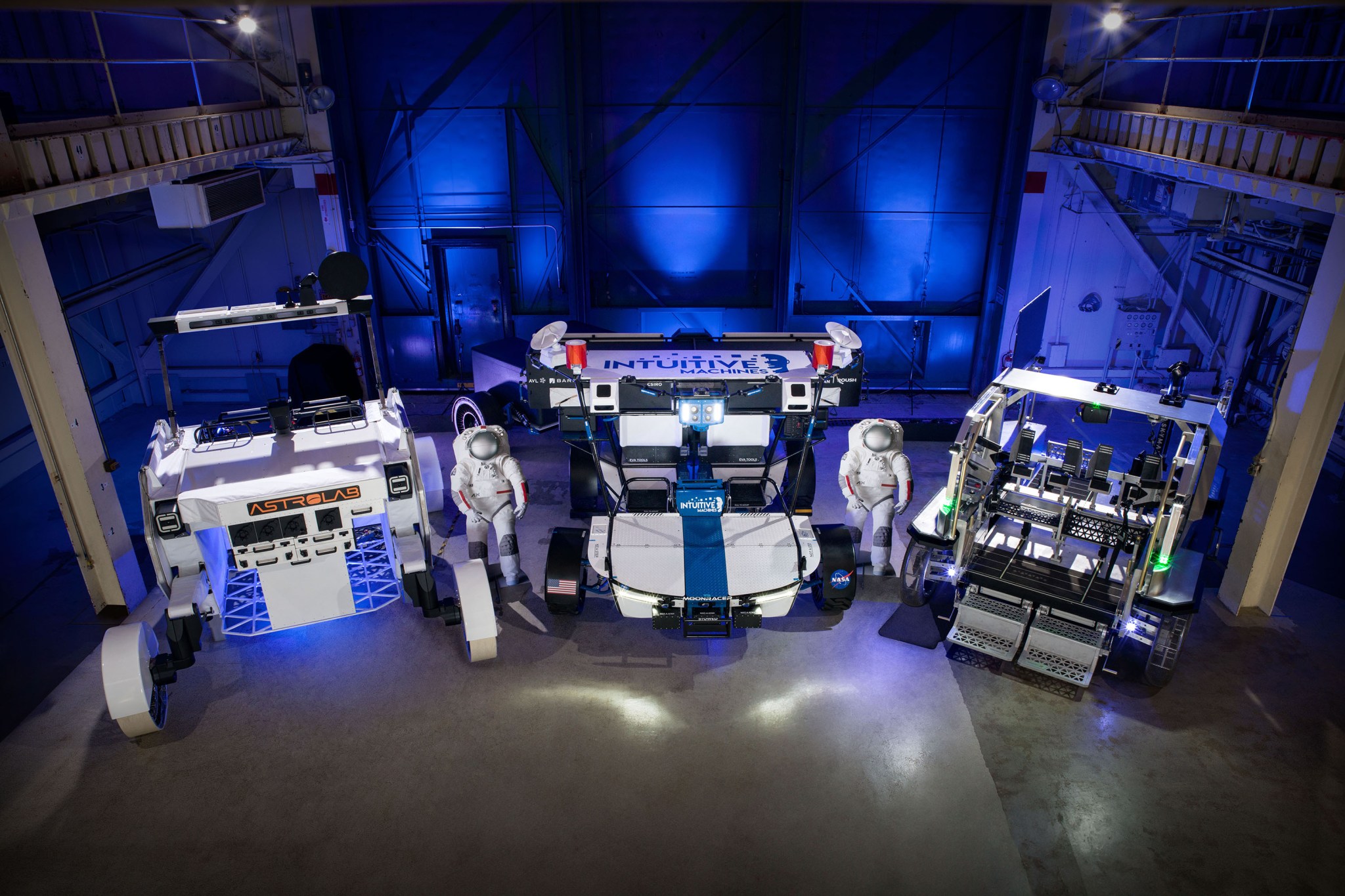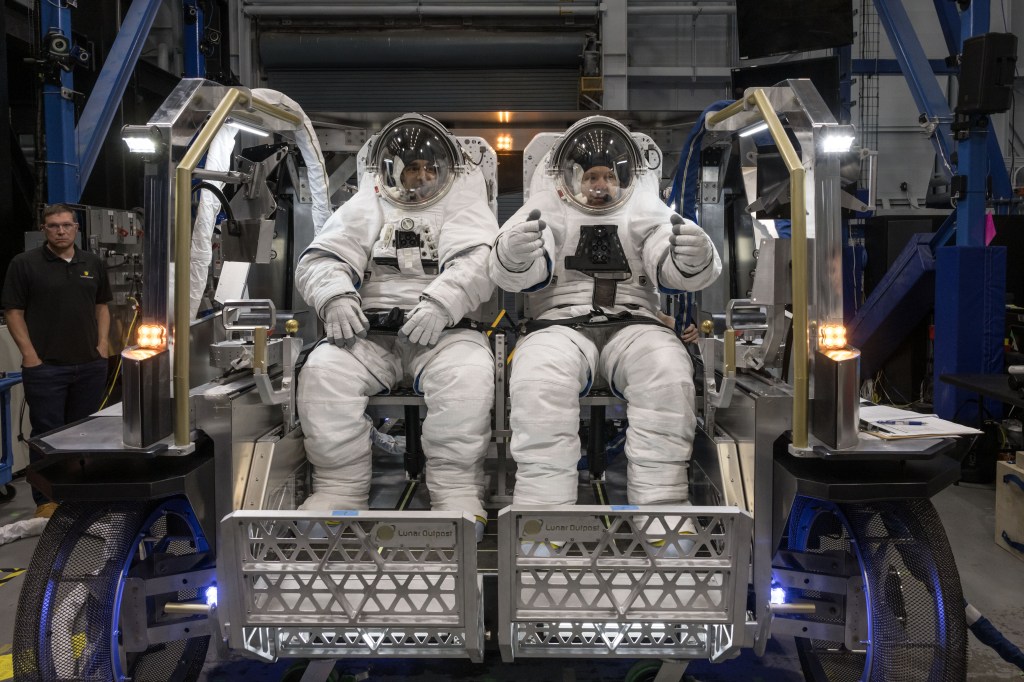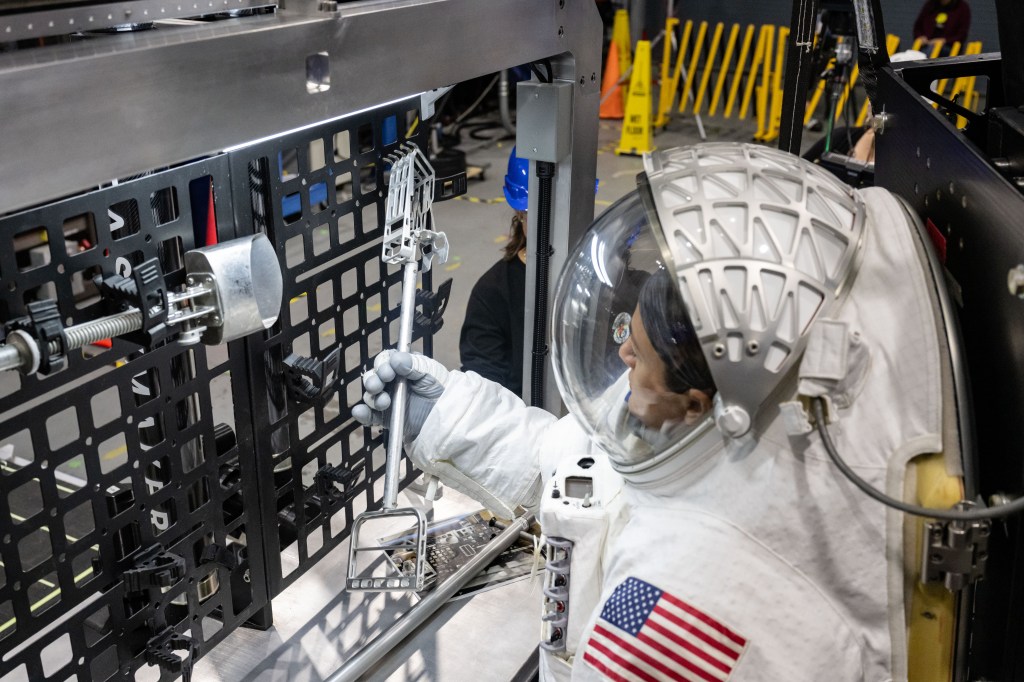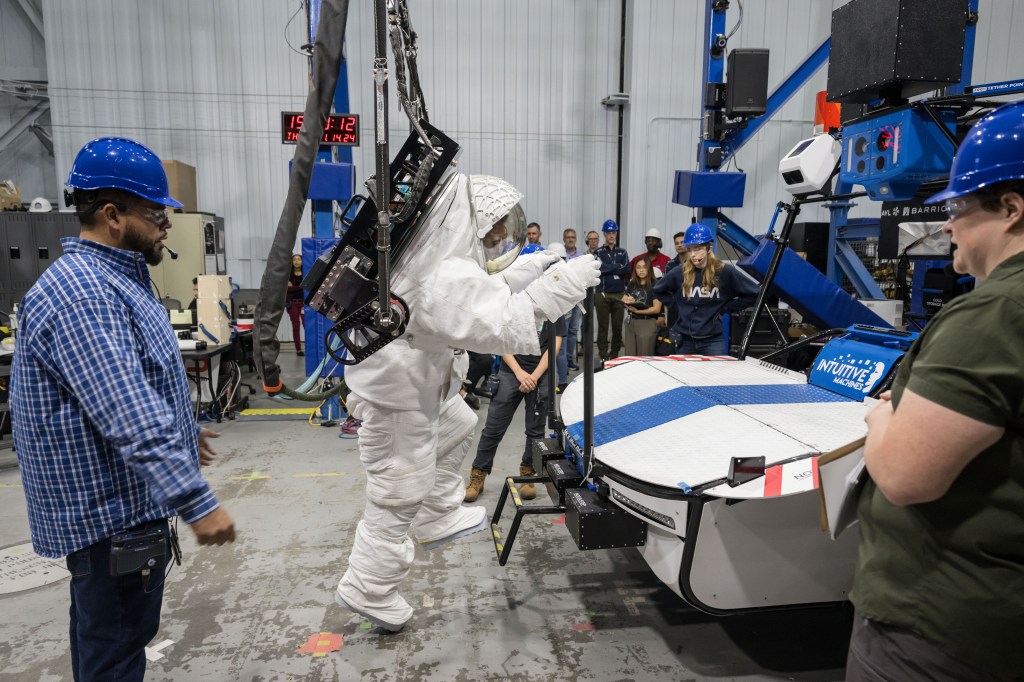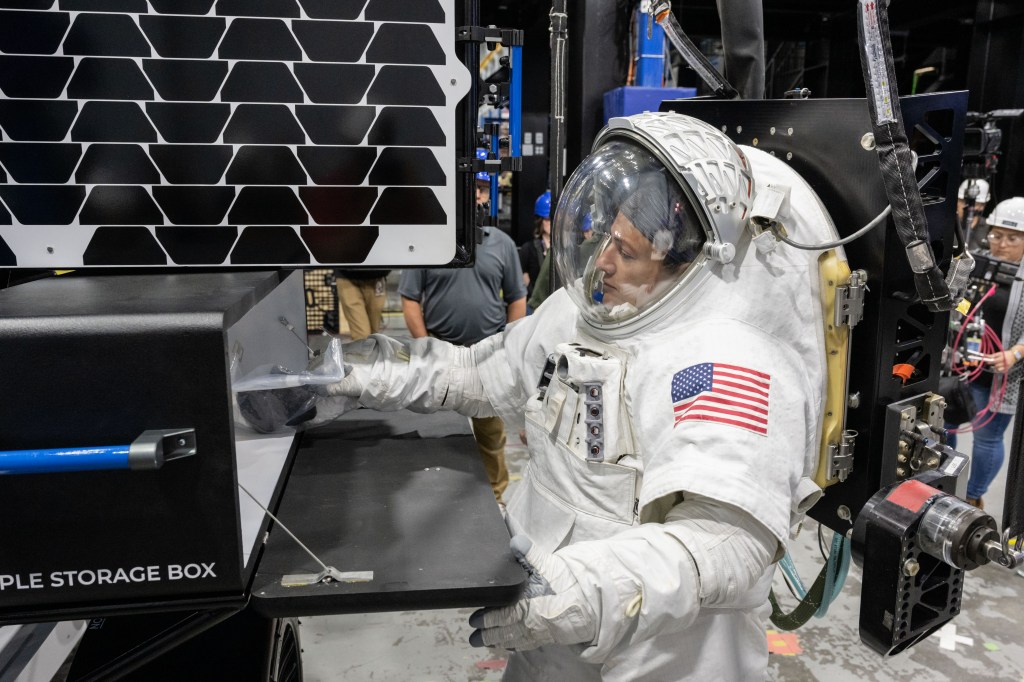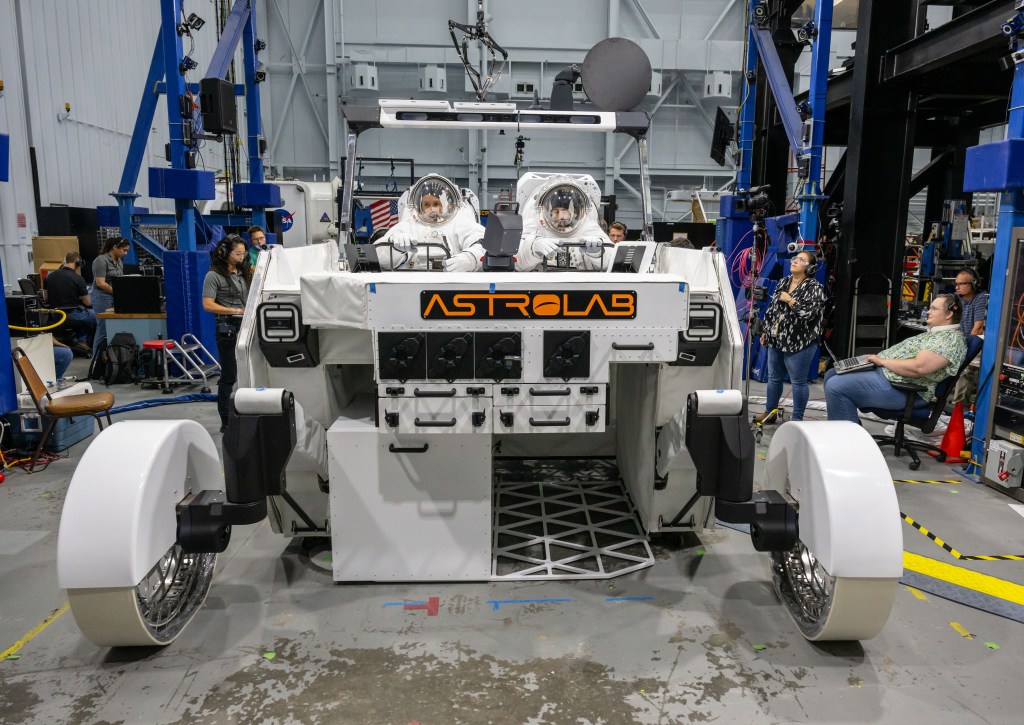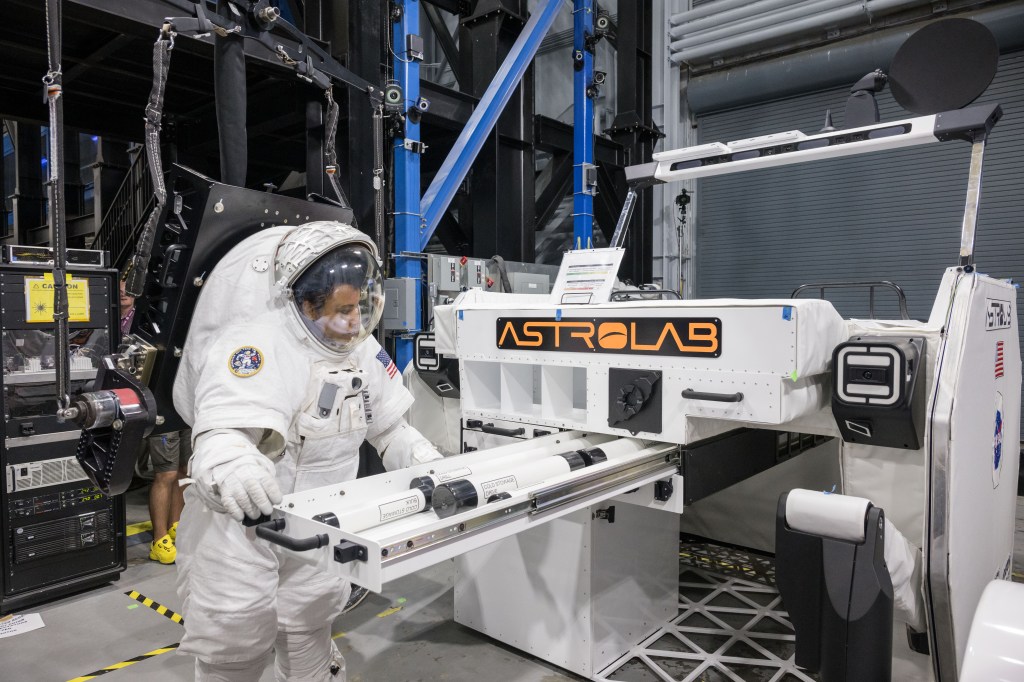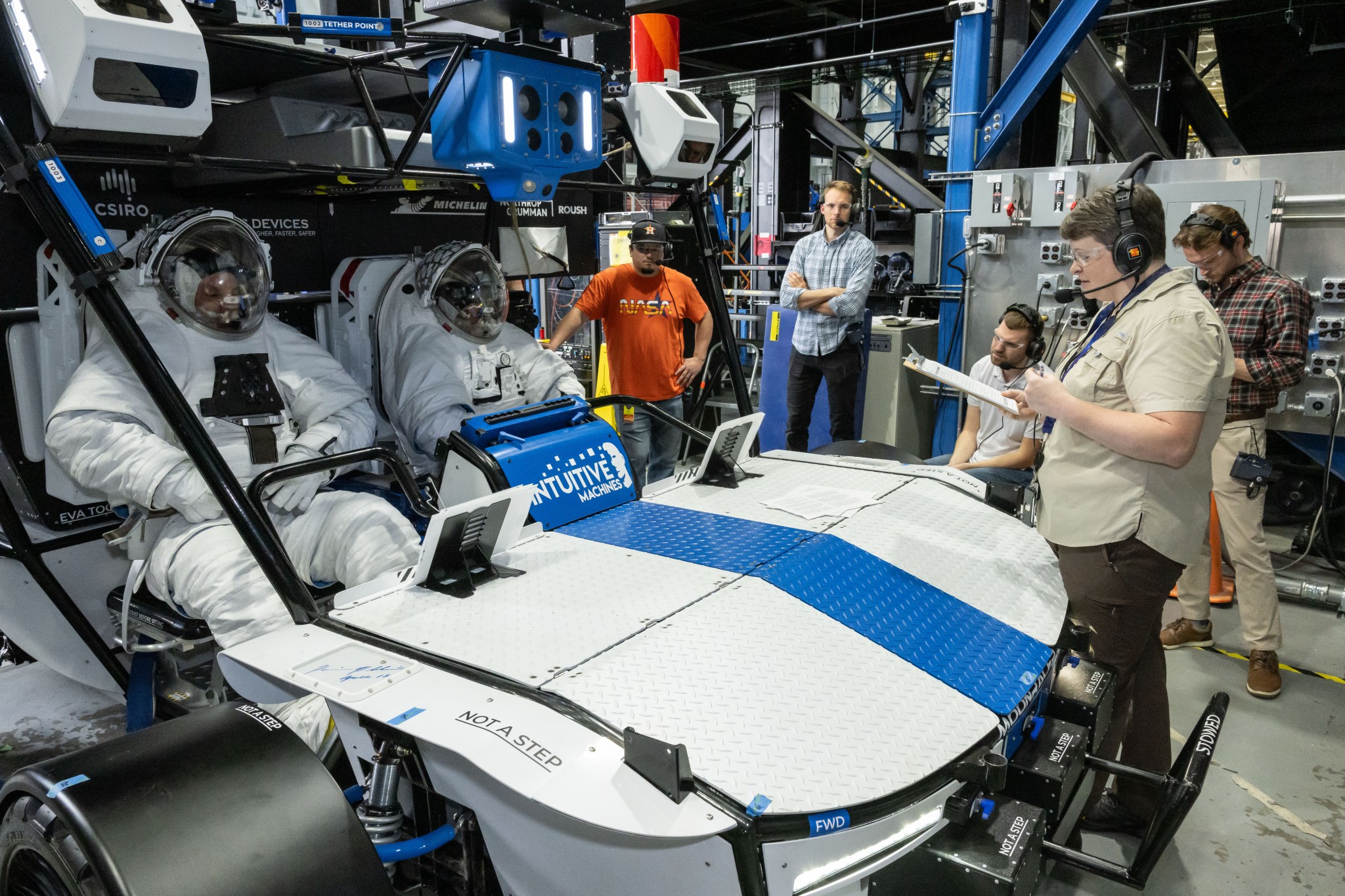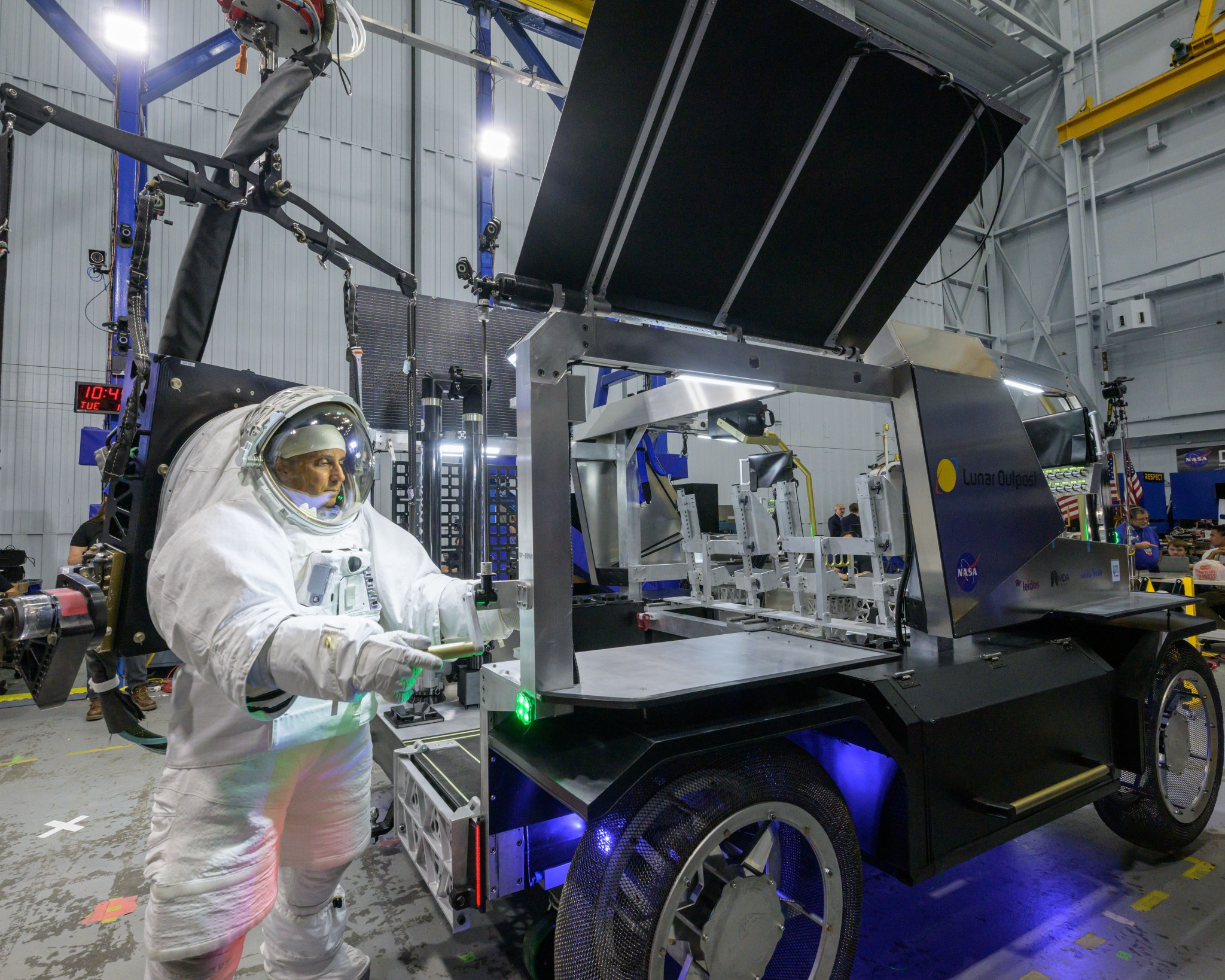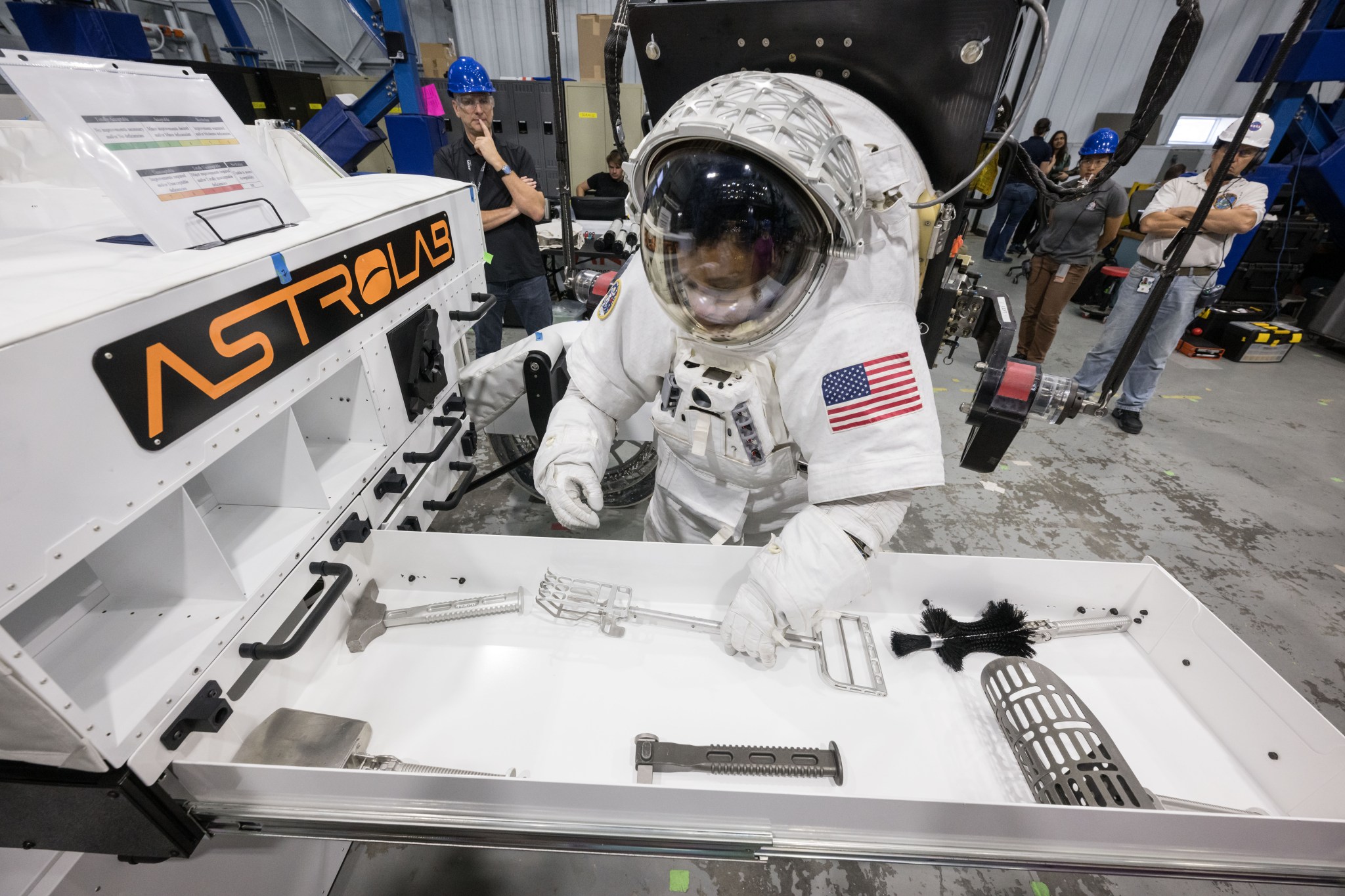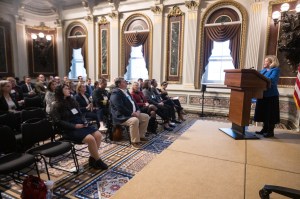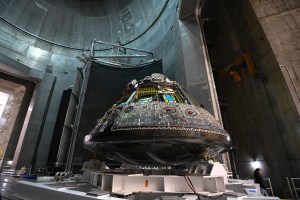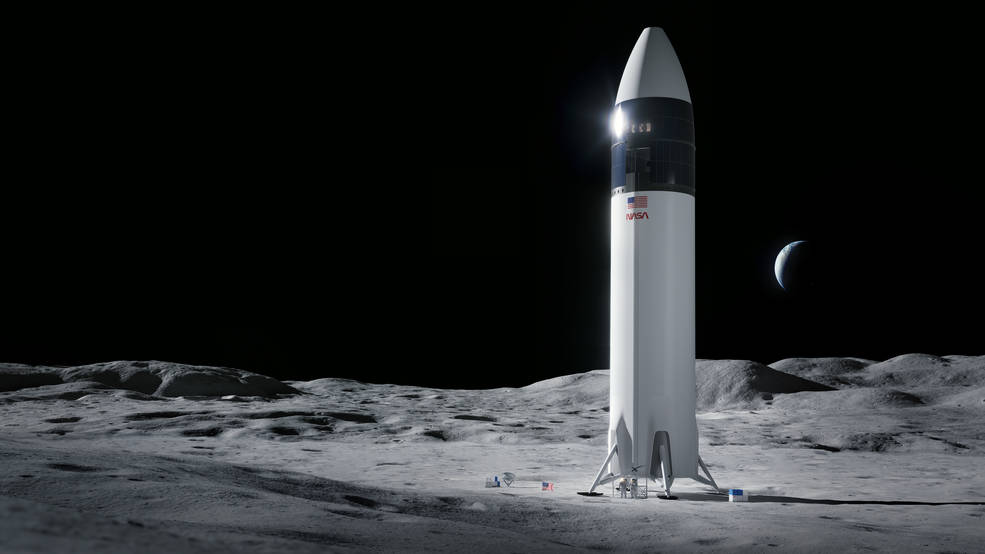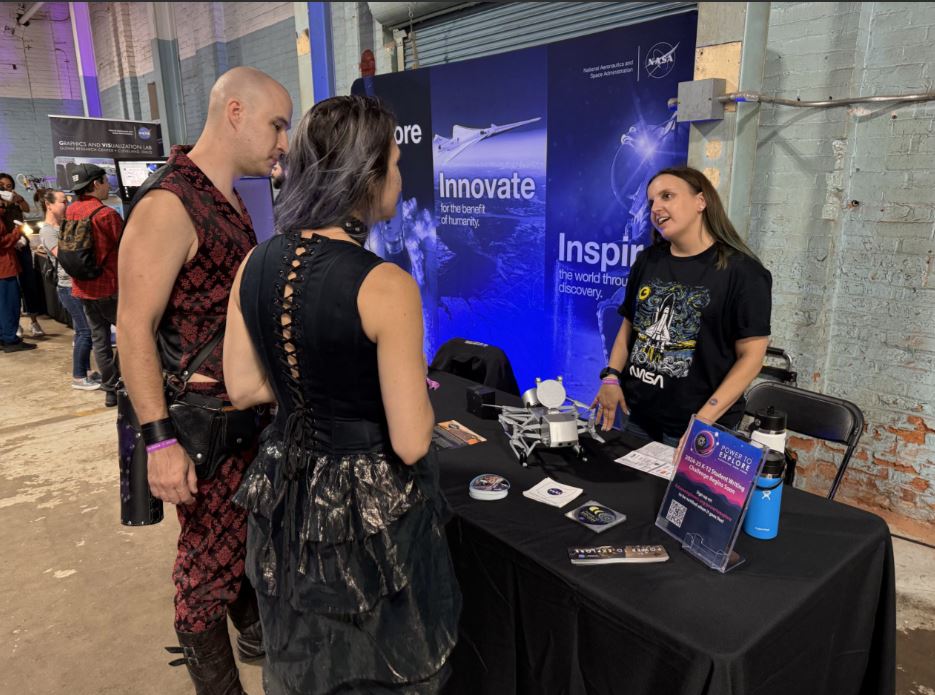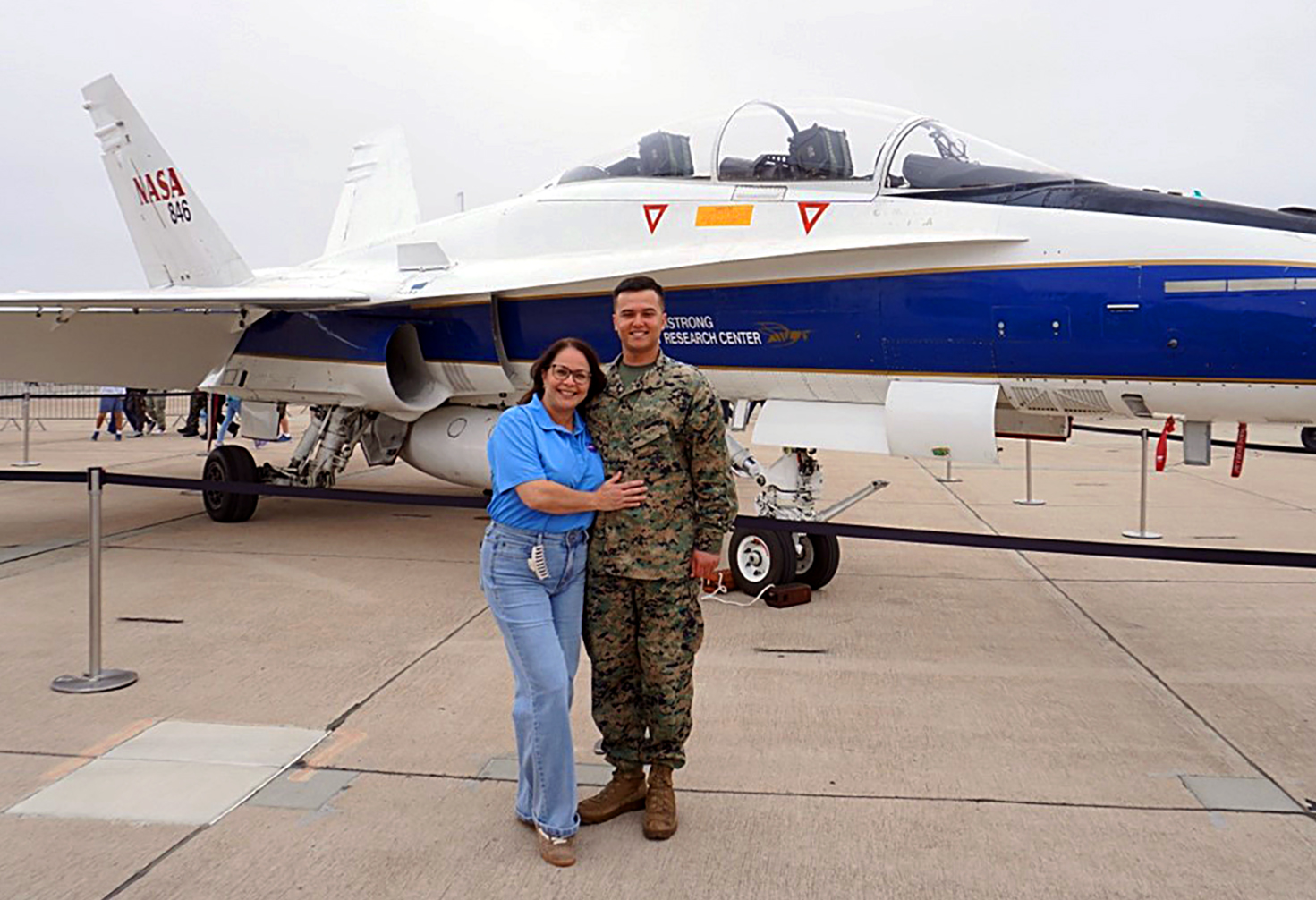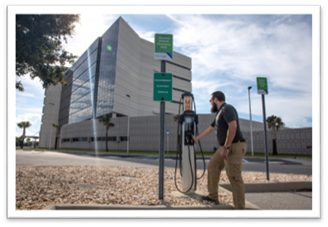New Commercial Artemis Moon Rovers Undergo Testing at NASA
Through NASA’s Artemis campaign, astronauts will land on the lunar surface and use a new generation of spacesuits and rovers as they live, work, and conduct science in the Moon’s South Pole region, exploring more of the lunar surface than ever before. Recently, the agency completed the first round of testing on three commercially owned […]
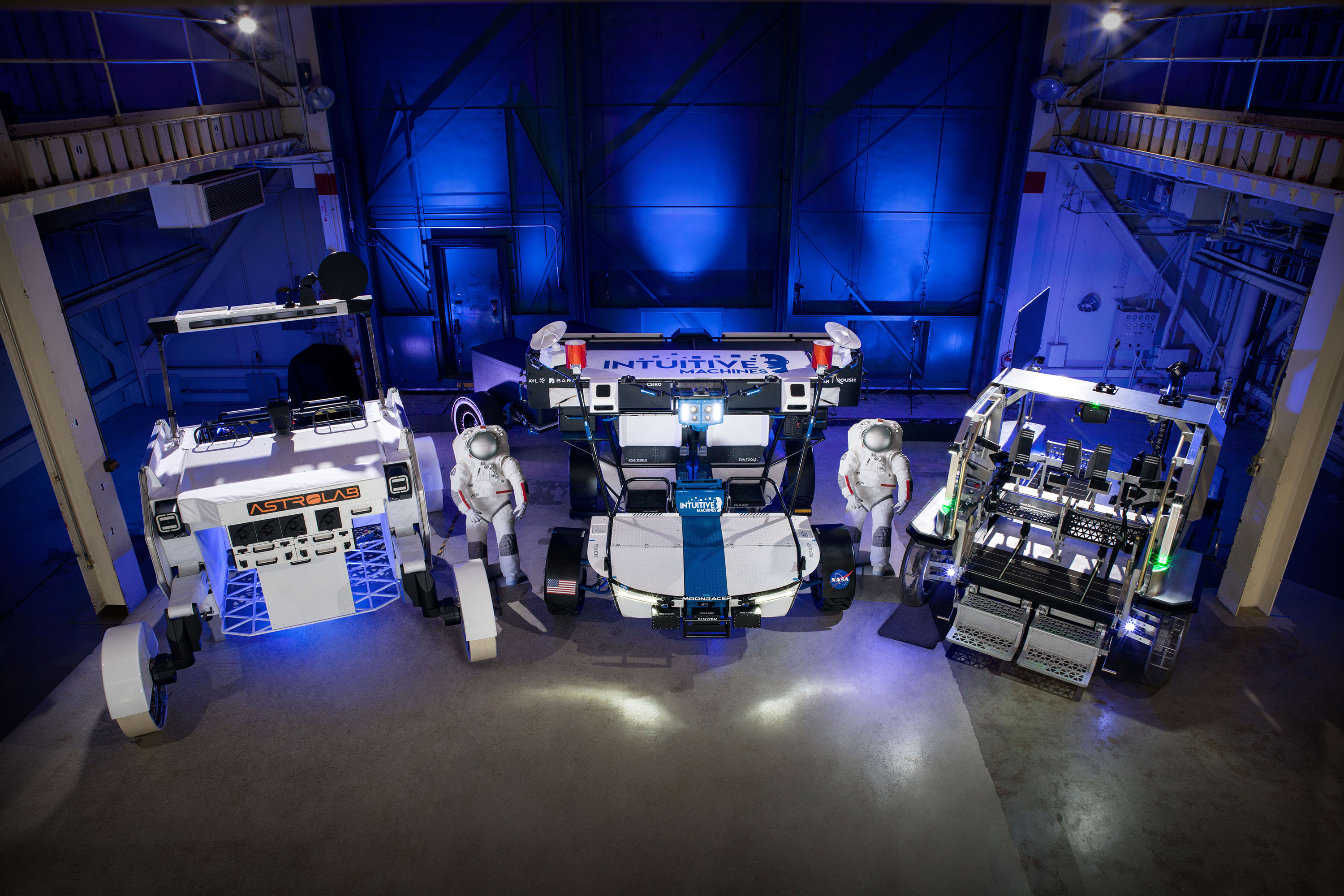
4 min read
Preparations for Next Moonwalk Simulations Underway (and Underwater)
Through NASA’s Artemis campaign, astronauts will land on the lunar surface and use a new generation of spacesuits and rovers as they live, work, and conduct science in the Moon’s South Pole region, exploring more of the lunar surface than ever before. Recently, the agency completed the first round of testing on three commercially owned and developed LTVs (Lunar Terrain Vehicle) from Intuitive Machines, Lunar Outpost, and Venturi Astrolab at NASA’s Johnson Space Center in Houston.
As part of an ongoing year-long feasibility study, each company delivered a static mockup of their vehicle to Johnson at the end of September, initiated rover testing in October and completed the first round of testing in December inside the Active Response Gravity Offload System (ARGOS) test facility. Lunar surface gravity is one-sixth of what we experience here on Earth, so to mimic this, ARGOS offers an analog environment that can offload pressurized suited subjects for various reduced gravity simulations.
This is the first major test milestone within the Lunar Terrain Vehicle Services contract and to have actual rovers delivered only four months after these companies were awarded is remarkable.

steve munday
NASA's Lunar Terrain Vehicle Project Manager
NASA’s engineering teams conducted tests where suited NASA astronauts and engineers performed tasks, maneuvers, and emergency drills on each rover. With astronauts acting as the test subjects, these human-in-the-loop tests are invaluable as crewmembers provide critical feedback on each rover’s design functionality, evaluate display interfaces and controls, and help identify potential safety concerns or design issues. This feedback is shared directly with each commercial provider, to incorporate changes based on lessons learned as they evolve their rover design.
“We are excited to have mockups from all three LTV commercial providers here at Johnson Space Center,” said Steve Munday, LTV project manager. “This is the first major test milestone within the Lunar Terrain Vehicle Services contract and to have actual rovers delivered only four months after these companies were awarded is remarkable.”
Testing consisted of NASA astronauts and engineers taking turns wearing both NASA’s Exploration Extravehicular Mobility Unit planetary prototype spacesuit as well as Axiom Space’s Axiom Extravehicular Mobility Unit lunar spacesuit. The test teams performed evaluations to understand the interactions between the crew, the spacesuits, and the LTV mockups.
While wearing NASA’s prototype spacesuit, crew members were suspended from ARGOS allowing teams to mimic theone-sixth gravitational field of the lunar surface. This allowed the crew members to conduct tasks on the outside of each rover, such as gathering or storing lunar geology tools, deploying science payloads, and handling cargo equipment, as if they are walking on the Moon.
While wearing Axiom Space’s pressurized spacesuit, teams evaluated the level of ease or difficulty in mobility crewmembers experienced when entering and exiting the rovers, the crew compartment and design, and the functionality of interacting with display interfaces and hand controls while wearing thick spacesuit gloves.
As part of testing, teams also conducted emergency drills, where engineers simulated rescuing an incapacitated crew member. As part of NASA’s requirements, each rover must have a design in place that enables an astronaut to single-handedly rescue their crewmates in the event of an emergency.
Since NASA selected the companies, Intuitive Machines, Lunar Outpost, and Venturi Astrolab have been working to meet NASA’s requirements through the preliminary design review. In 2025, the agency plans to issue a request for task order proposals to any eligible providers for a demonstration mission to continue developing the LTV, deliver it to the surface of the Moon, and validate its performance and safety ahead of Artemis V, when NASA intends to begin using the LTV for crewed operations.
Through Artemis, NASA will send astronauts – including the next Americans, and the first international partner astronaut – to explore the Moon for scientific discovery, technology evolution, economic benefits, and to build the foundation for future crewed missions to Mars.
Learn about the rovers, suits, and tools that will help Artemis astronauts to explore more of the Moon:
Share
Details
Related Terms
What's Your Reaction?



















.jpg?#)























